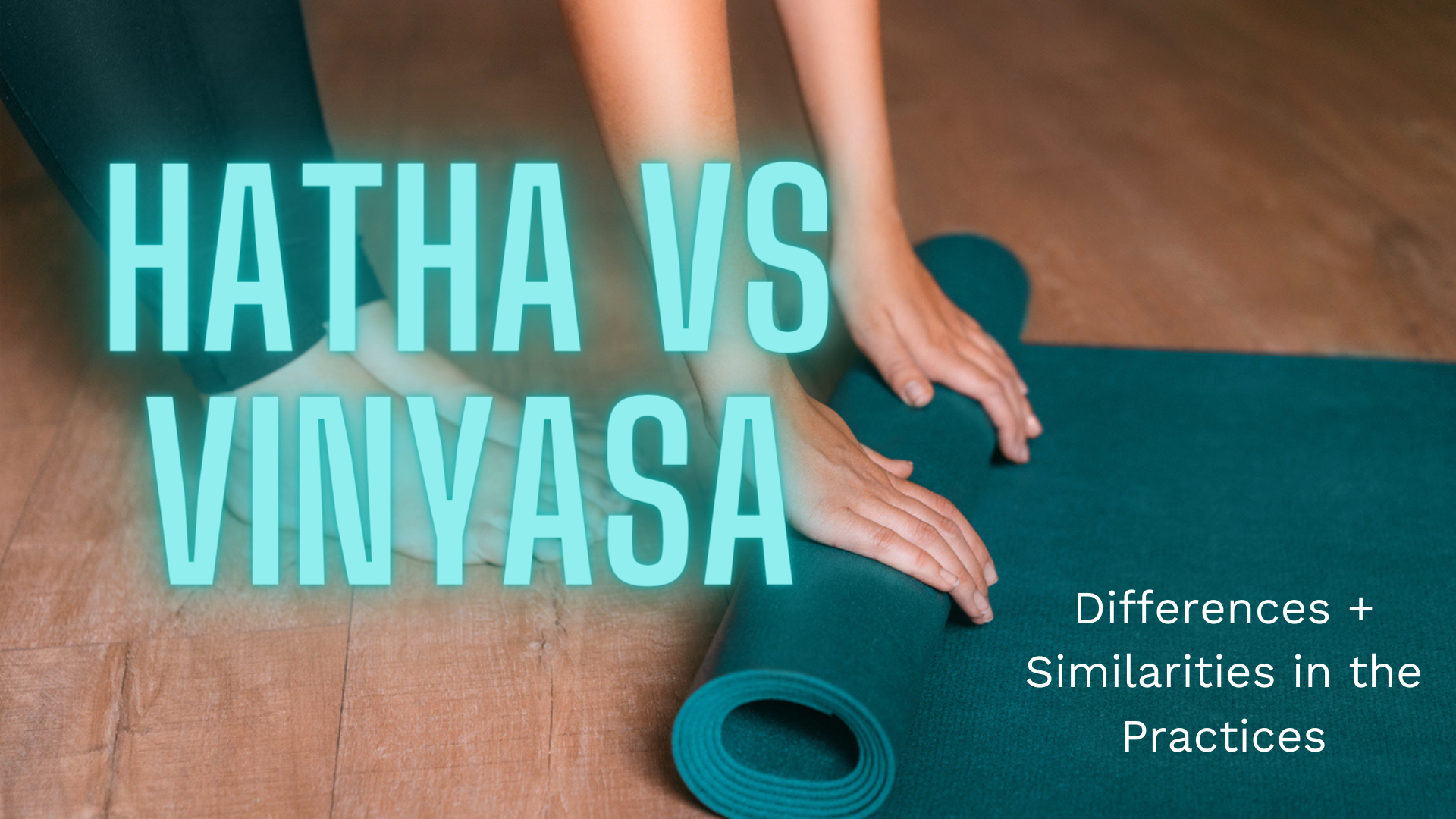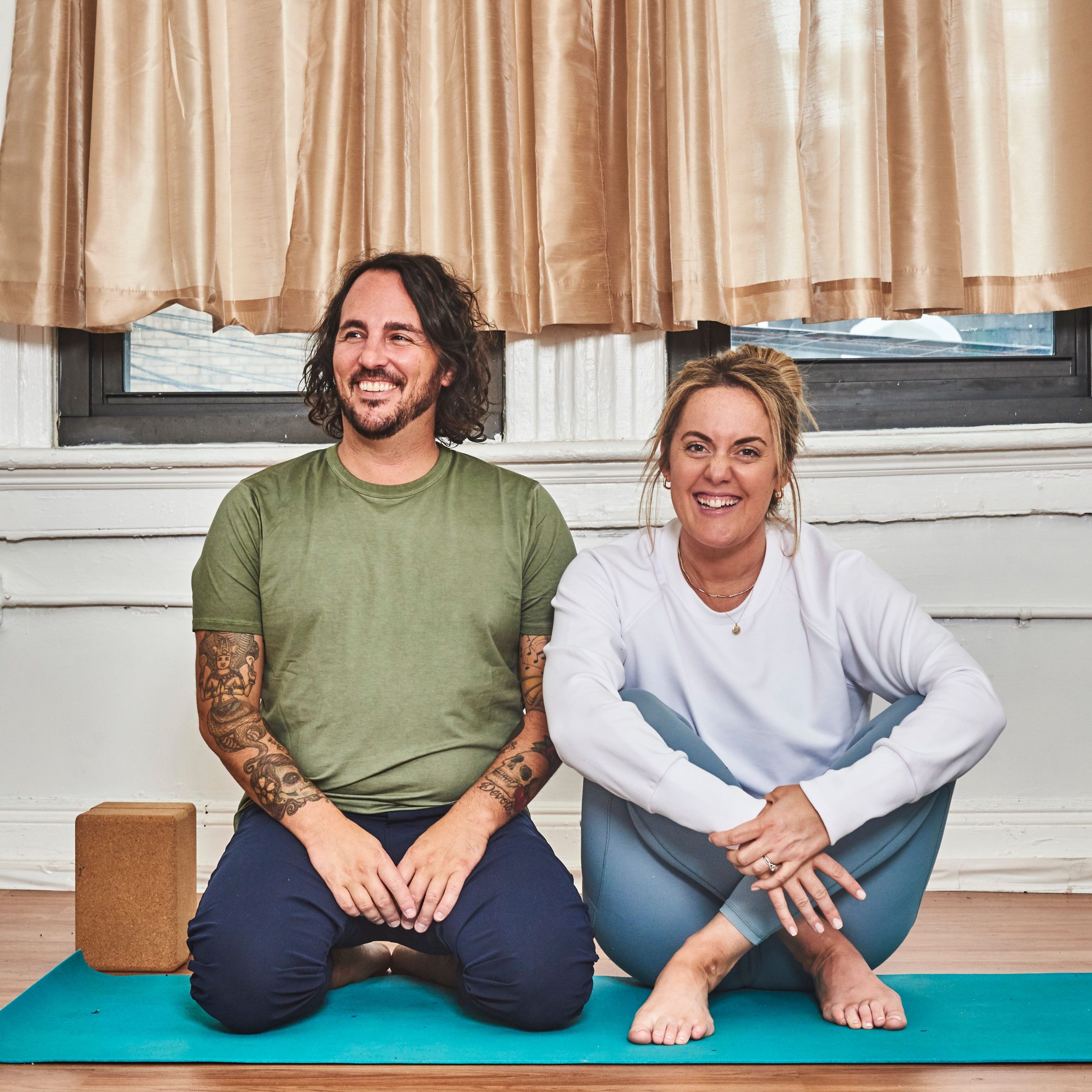
There’s a bunch of different styles of yoga, and some are more similar than others. When discussing the topic of Hatha vs Vinyasa yoga, it’s important to look at the evolution of the terms. Historically, Hatha has functioned as the umbrella term whereas Vinyasa is technically a form of Hatha. Within the yoga world, there’s been a distinction as to what a Vinyasa class specifically is.
When you see something labeled as a Vinyasa class you’ll notice transition, flow, and an overall cohesion of the practice through movement. Hatha simply means putting movement to breath. There are some similarities between Hatha and Vinyasa, such as: they use the same postures and they both require you to spend a significant time in standing poses compared to other styles. Their basic structure is also similar, linking movement with the breath.
Over time, the term Hatha has become more synonymous with a strong physical practice that energetically encapsulates more stillness, precision and alignment while Vinyasa has been used to encapsulate a more physical practice that incorporates flow, rhythm, and breath.
Let’s take a look at some of the traits that differentiate Vinyasa from Hatha.
What is Hatha yoga?
As mentioned in Light on Yoga, the name Hatha can be translated from Sanskrit to mean “Sun & Moon,” taken from Ha (sun) and Tha (moon). The classical understanding of Hatha is a little different from today’s interpretation. In modern understanding, Hatha yoga has been more defined as a specific style of yoga practice which includes precision, alignment, stability, grounding, strength and flexibility. Hatha yoga is considered more accessible to start and is a great place for beginners to get familiar with how-to do yoga poses.
Some traits of Hatha yoga include:
- Holding postures for a few breaths at a time
- Putting focus on individual postures rather than the sequence and linking between postures
- Practicing at a slower pace
- Having the time and space to truly focus on the correct alignment of each pose
Benefits of Hatha yoga:
- Strength
- Balance
- Flexibility
Example of a Hatha yoga class:
What is Vinyasa yoga?
In the book “Health, Healing, and Beyond,” Krishnamacharya’s son Desikachar defined the concept of Vinyasa Krama like this:
“The concept that guides the performance of an asana and also the course of practice is called vinyasa. It means step-by-step, a progression that has a beginning, middle, and end… The asana is performed with concentration on the flow of the movement and smoothness of inhalation, exhalation, and retention, and toward a prescribed completion. Each step is a preparation for the next. And so it is with a sequence of asanas. Each posture is part of a flow of exercise; a beginning, a building toward a posture that is the height of the program, and then the progression toward an ending.”
Some traits of Vinyasa yoga include:
- Dynamic body movements
- Focused on physical fitness
- Incorporates hopping and jumping
- Uses sun salutations as a driving force between the structure
- Focuses on transitions between postures
- Links each posture to an inhale or exhale
Benefits of Vinyasa yoga:
- Good as a cardio exercise (fast-paced movement can help you get your heart rate up)
- The focus on breath can help to improve lung function with all that activity helping to put your lungs to work
- Can help to build strength
- Core strength
- Upper body strength
- Flexibility
- Lengthen muscles safely
- Increased mobility
- Full body workout
Example of a Vinyasa yoga class:
Hatha vs Vinyasa yoga: Which one is best for you?
Ultimately, there are many similarities between every type of yoga. There are even aspects of yoga that bleed into other spiritual and physical practices. It’s important to remember a couple of things when determining which practice is best for you:
- What am I looking to gain from this practice (spiritually, emotionally, physically)?
- How am I feeling as I navigate these different practices?
- Are there particular areas I need to work on that a specific practice can help me with?
- What is most aligned with the practice that I typically wish to practice or do I wish to switch it up and try something new?
Vinyasa yoga is good for…
- Those who are looking for a more athletic practice: There is more hopping and jumping and it will be faster-paced.
- Those looking to sweat: Vinyasa will have cardio, with faster movement between postures.
- Those looking for dynamic, expressive movement: Vinyasa yoga is sort of like a dance in a lot of ways. There is more dynamic, expressive movement and fluidity between postures.
- Those looking for more creativity and playfulness in the sequences.
Hatha yoga is good for…
- Those who want a more grounding practice that feels strong and stable.
- Those who are looking for a more slow paced practice (not to be confused with gentle yoga). In Hatha yoga you can still expect to practice advanced poses depending on the level of class you take.
- Those who want to master particular poses and increase their stamina in standing poses.
If you’re looking to further your understanding of the Hatha and Vinyasa yoga practices, head to the YogaRenew YouTube Channel or enroll in our online yoga teacher training courses. Inside our courses and YouTube videos, you will learn the comprehensive breakdown of the Hatha and Vinyasa style of yoga and how alignment plays an integral role in both of them.
Join our mailing list for incredible weekly content!








